
台湾政治转型的原因 上海交通大学 国际与公共事务学院教授、博导 林冈
台湾政治转型的原因 上海交通大学 国际与公共事务学院教授、博导 林冈
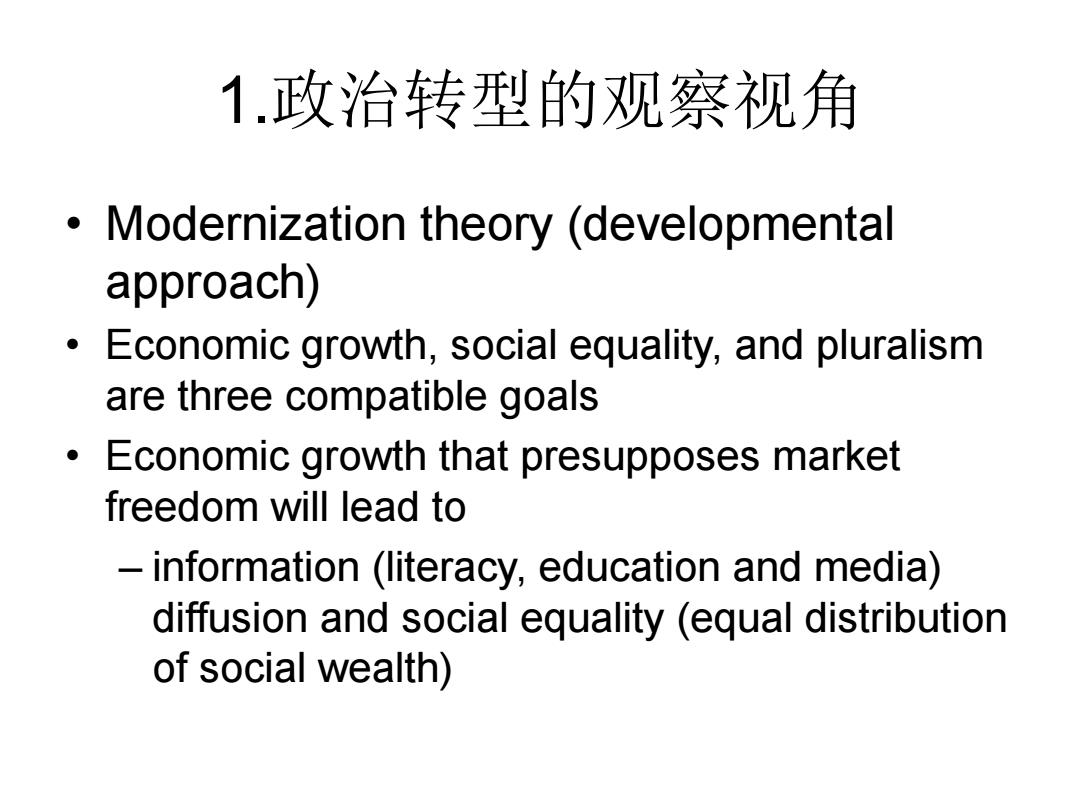
1.政治转型的观察视角 Modernization theory (developmental approach) Economic growth,social equality,and pluralism are three compatible goals o Economic growth that presupposes market freedom will lead to information (literacy,education and media) diffusion and social equality (equal distribution of social wealth)
1.政治转型的观察视角 • Modernization theory (developmental approach) • Economic growth, social equality, and pluralism are three compatible goals • Economic growth that presupposes market freedom will lead to – information (literacy, education and media) diffusion and social equality (equal distribution of social wealth)
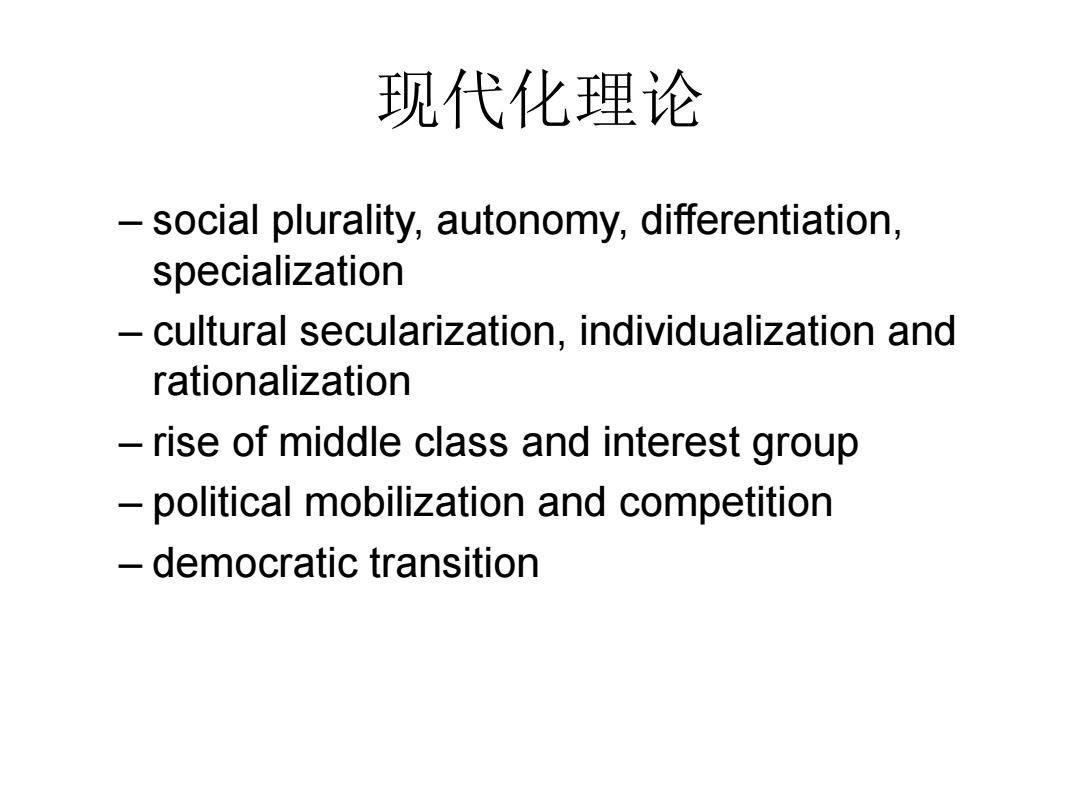
现代化理论 -social plurality,autonomy,differentiation, specialization -cultural secularization,individualization and rationalization -rise of middle class and interest group political mobilization and competition democratic transition
现代化理论 – social plurality, autonomy, differentiation, specialization – cultural secularization, individualization and rationalization – rise of middle class and interest group – political mobilization and competition – democratic transition
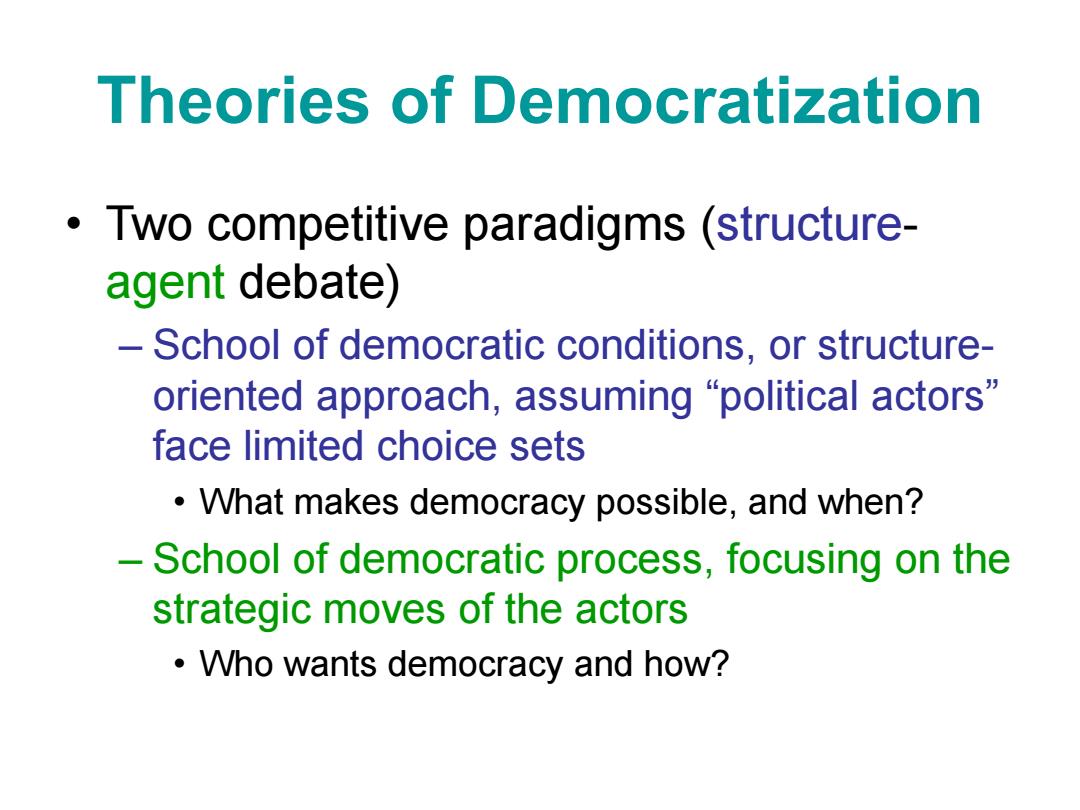
Theories of Democratization Two competitive paradigms(structure- agent debate) School of democratic conditions,or structure- oriented approach,assuming "political actors' face limited choice sets What makes democracy possible,and when? -School of democratic process,focusing on the strategic moves of the actors Who wants democracy and how?
Theories of Democratization • Two competitive paradigms (structure- agent debate) – School of democratic conditions, or structure- oriented approach, assuming “political actors” face limited choice sets • What makes democracy possible, and when? – School of democratic process, focusing on the strategic moves of the actors • Who wants democracy and how?
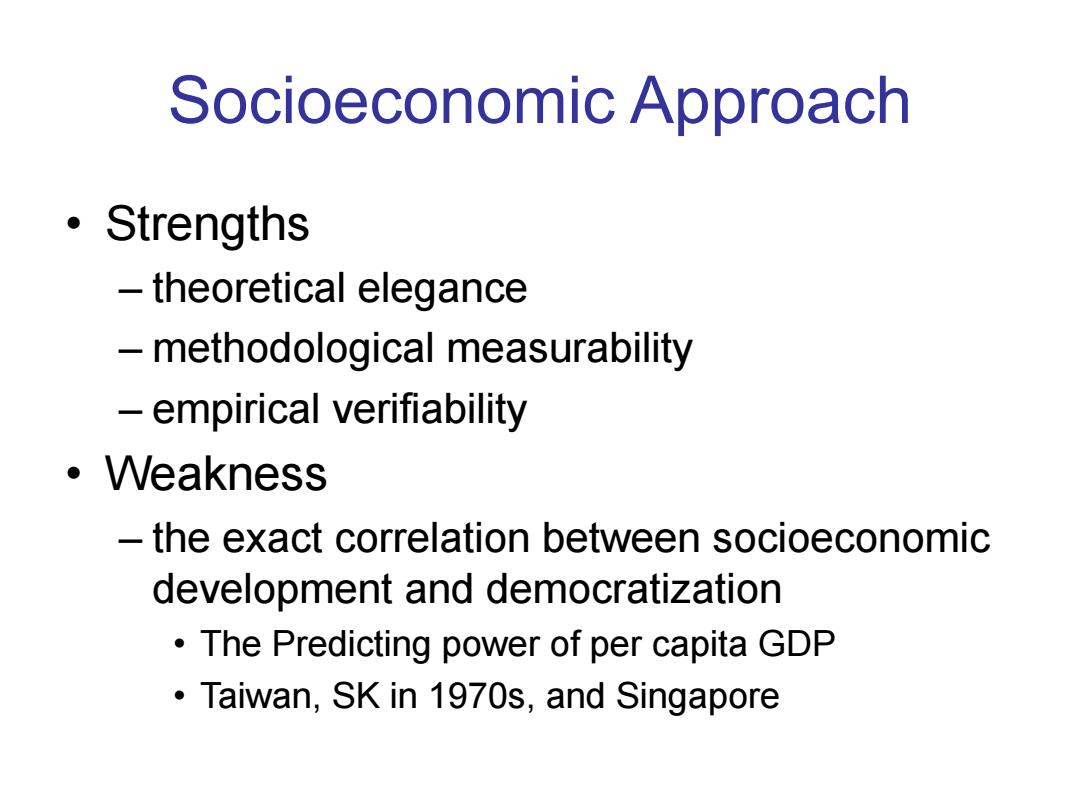
Socioeconomic Approach ·Strengths -theoretical elegance methodological measurability -empirical verifiability ·Veakness the exact correlation between socioeconomic development and democratization The Predicting power of per capita GDP Taiwan,SK in 1970s,and Singapore
Socioeconomic Approach • Strengths – theoretical elegance – methodological measurability – empirical verifiability • Weakness – the exact correlation between socioeconomic development and democratization • The Predicting power of per capita GDP • Taiwan, SK in 1970s, and Singapore
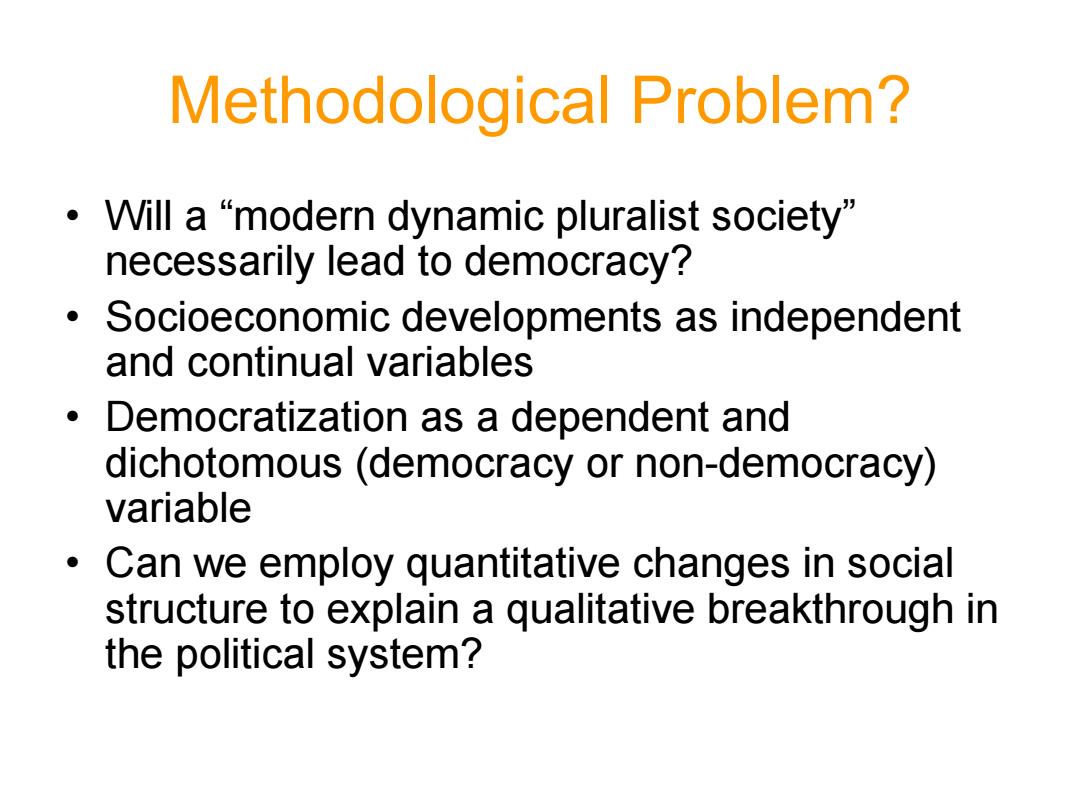
Methodological Problem? ·Wila“modern dynamic pluralist society" necessarily lead to democracy? Socioeconomic developments as independent and continual variables Democratization as a dependent and dichotomous(democracy or non-democracy) variable Can we employ quantitative changes in social structure to explain a qualitative breakthrough in the political system?
Methodological Problem? • Will a “modern dynamic pluralist society” necessarily lead to democracy? • Socioeconomic developments as independent and continual variables • Democratization as a dependent and dichotomous (democracy or non-democracy) variable • Can we employ quantitative changes in social structure to explain a qualitative breakthrough in the political system?
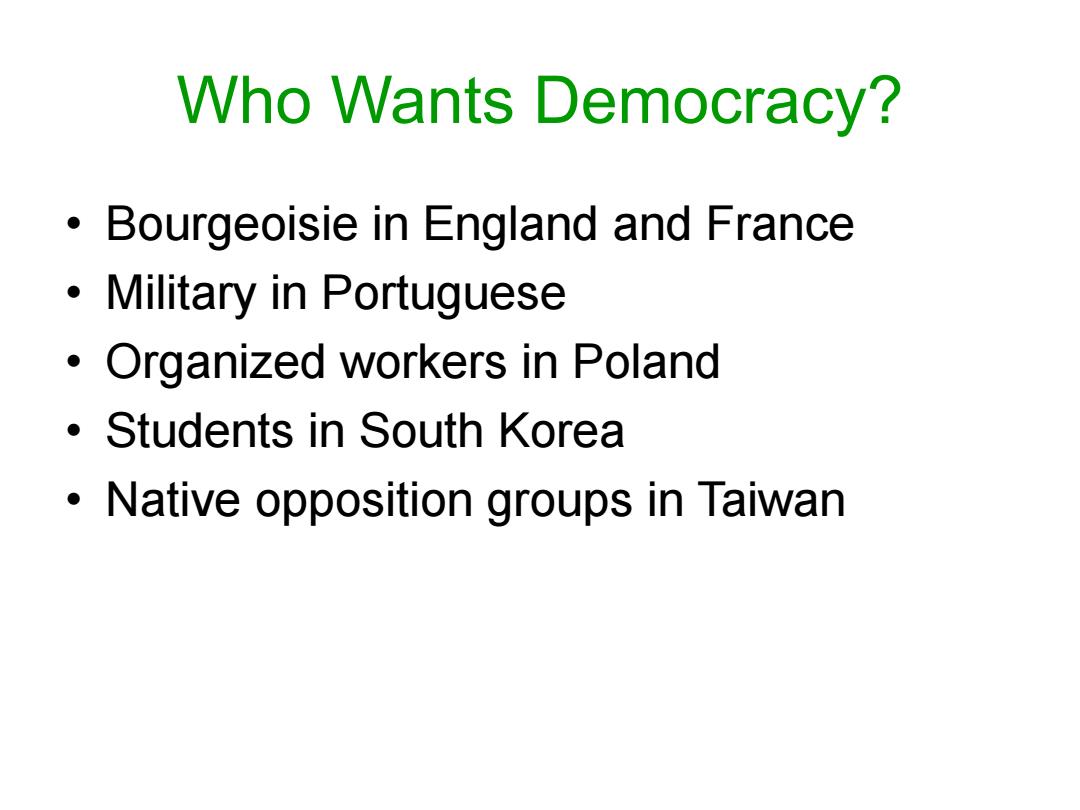
Who Wants Democracy? Bourgeoisie in England and France Military in Portuguese Organized workers in Poland Students in South Korea Native opposition groups in Taiwan
Who Wants Democracy? • Bourgeoisie in England and France • Military in Portuguese • Organized workers in Poland • Students in South Korea • Native opposition groups in Taiwan

1.政治转型的观察视角 ·现代化理论(发展理 国民党温和 国民党强硬 论)的解释 派 派 一经济增长(工业化,都 市化),收入平等,教 育水准提升,通讯发达, 社会多元,文化世俗化, 中产阶级的兴起 党外温和派 党外激进派 政治过程论的解释 (郑南榕) 一朝野互动,内外结合
1.政治转型的观察视角 • 现代化理论(发展理 论)的解释 – 经济增长(工业化,都 市化),收入平等,教 育水准提升,通讯发达, 社会多元,文化世俗化, 中产阶级的兴起 • 政治过程论的解释 – 朝野互动,内外结合 国民党温和 派 国民党强硬 派 党外温和派 党外激进派 (郑南榕)

Institution as an Independent Variable Institutional change Institutional modification Old institution Political >Institution stiffness actor Structural change
Institution as an Independent Variable Structural change Old institution Political actor Institutional change Institutional modification Institution stiffness
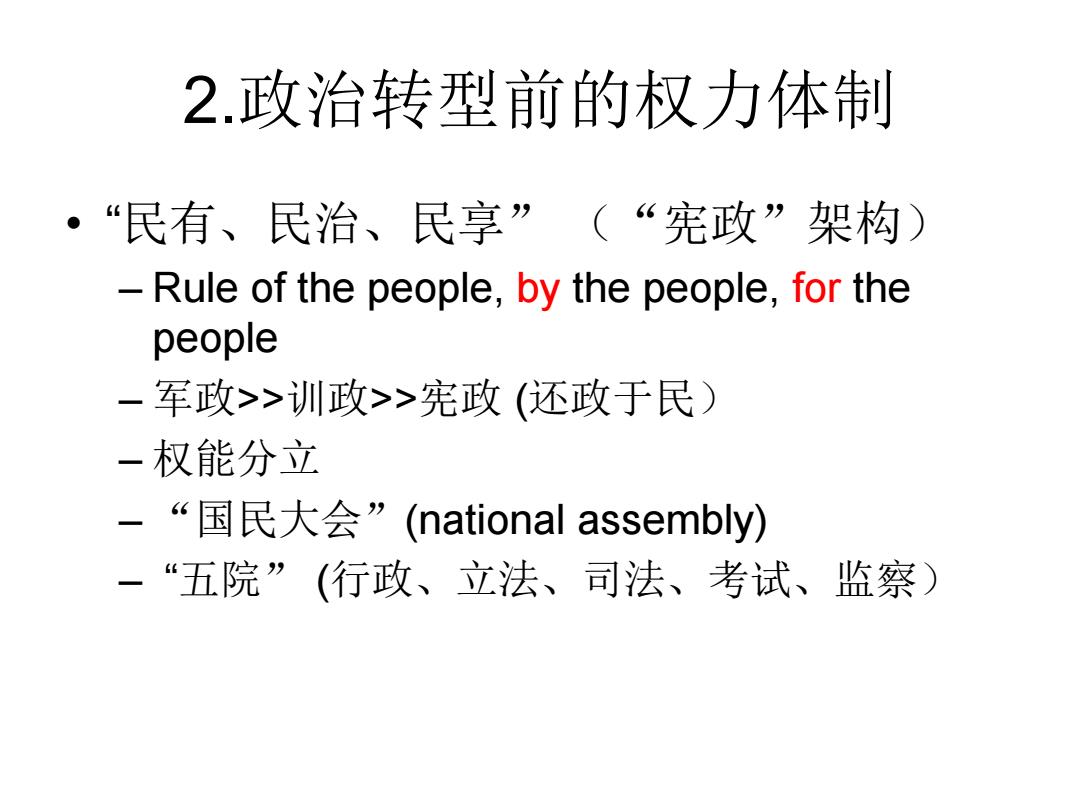
2.政治转型前的权力体制 ·“民有、民治、民享”(“宪政”架构) Rule of the people,by the people,for the people 一军政>>训政>>宪政(还政于民) 一权能分立 -“国民大会”(national assembly) 一“五院”(行政、立法、司法、考试、监察)
2.政治转型前的权力体制 • “民有、民治、民享” (“宪政”架构) – Rule of the people, by the people, for the people – 军政>>训政>>宪政 (还政于民) – 权能分立 – “国民大会”(national assembly) – “五院” (行政、立法、司法、考试、监察)